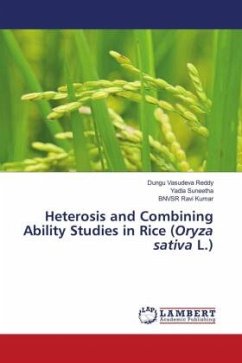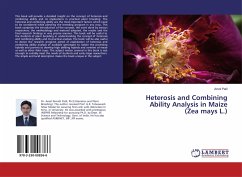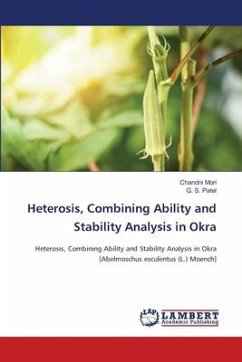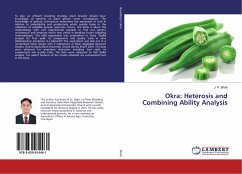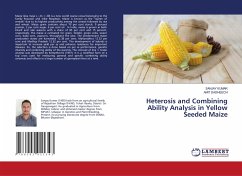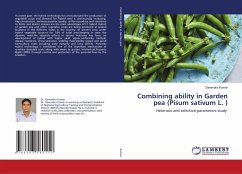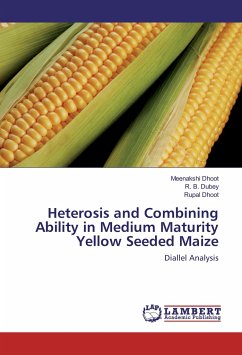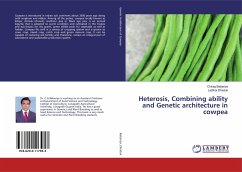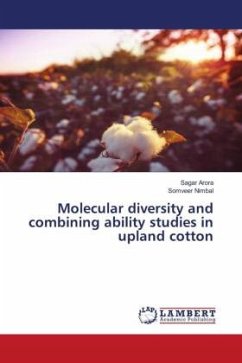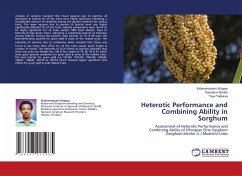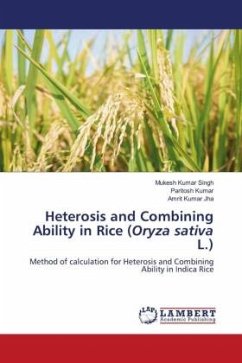
Heterosis and Combining Ability in Rice (Oryza sativa L.)
Method of calculation for Heterosis and Combining Ability in Indica Rice
Versandkostenfrei!
Versandfertig in 6-10 Tagen
40,99 €
inkl. MwSt.

PAYBACK Punkte
20 °P sammeln!
The Book Heterosis and Combining Ability in Indica Rice (Oryza sativa L.) is written to make understand that how calculate heterosis and combining ability in rice cultivars. Inda is the 2nd largest producer of paddy in the World followed by China while India is the World's largest exporter of normal rice as well as Basmati Rice. This book will be more useful for undergraduate, post graduate and Ph. D. students or researchers in the agriculture field. The study of heterosis is more helpful to a breeder for developing high yielding varieties in all crops. In this book people get the experimental...
The Book Heterosis and Combining Ability in Indica Rice (Oryza sativa L.) is written to make understand that how calculate heterosis and combining ability in rice cultivars. Inda is the 2nd largest producer of paddy in the World followed by China while India is the World's largest exporter of normal rice as well as Basmati Rice. This book will be more useful for undergraduate, post graduate and Ph. D. students or researchers in the agriculture field. The study of heterosis is more helpful to a breeder for developing high yielding varieties in all crops. In this book people get the experimental knowledge of filed, how observations are taken, data analysis and interpretation of the data of heterosis. It also helpful to know the capability of rice cultivars to increase yield in future. The field experiment of heterosis in Indica rice was conducted at the farm of the Department of Genetics and Plant Breeding, Institute of Agricultural Sciences, Banaras Hindu University, Varanasi, UP,India. The achievements of the Department of Genetics and Plant Breeding are More than 15 Rice Varieties have been released and notified.



